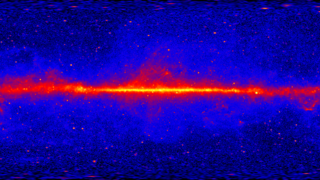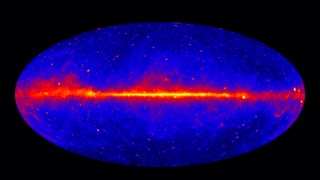NASA's Fermi Space Telescope Explores New Energy Extremes
Fermi's Large Area Telescope (LAT) scans the entire sky every three hours, continually deepening its portrait of the sky in gamma rays, the most extreme form of light. While the energy of visible light falls between about 2 and 3 electron volts, the LAT detects gamma rays with energies ranging from 20 million electron volts (MeV) to more than 300 billion (GeV).
But at higher energies, gamma rays are few and far between. Above 10 GeV, even Fermi's LAT detects only one gamma ray every four months from some sources. The LAT's predecessor, the EGRET instrument on NASA's Compton Gamma Ray Observatory, detected only 1,500 individual gamma rays in this range during its nine-year lifetime, while the LAT detected more than 150,000 in just three years.
Any object producing gamma rays at these energies is undergoing extraordinary astrophysical processes. More than half of the 496 sources in the new census are active galaxies, where matter falling into a supermassive black hole powers jets that spray out particles at nearly the speed of light.
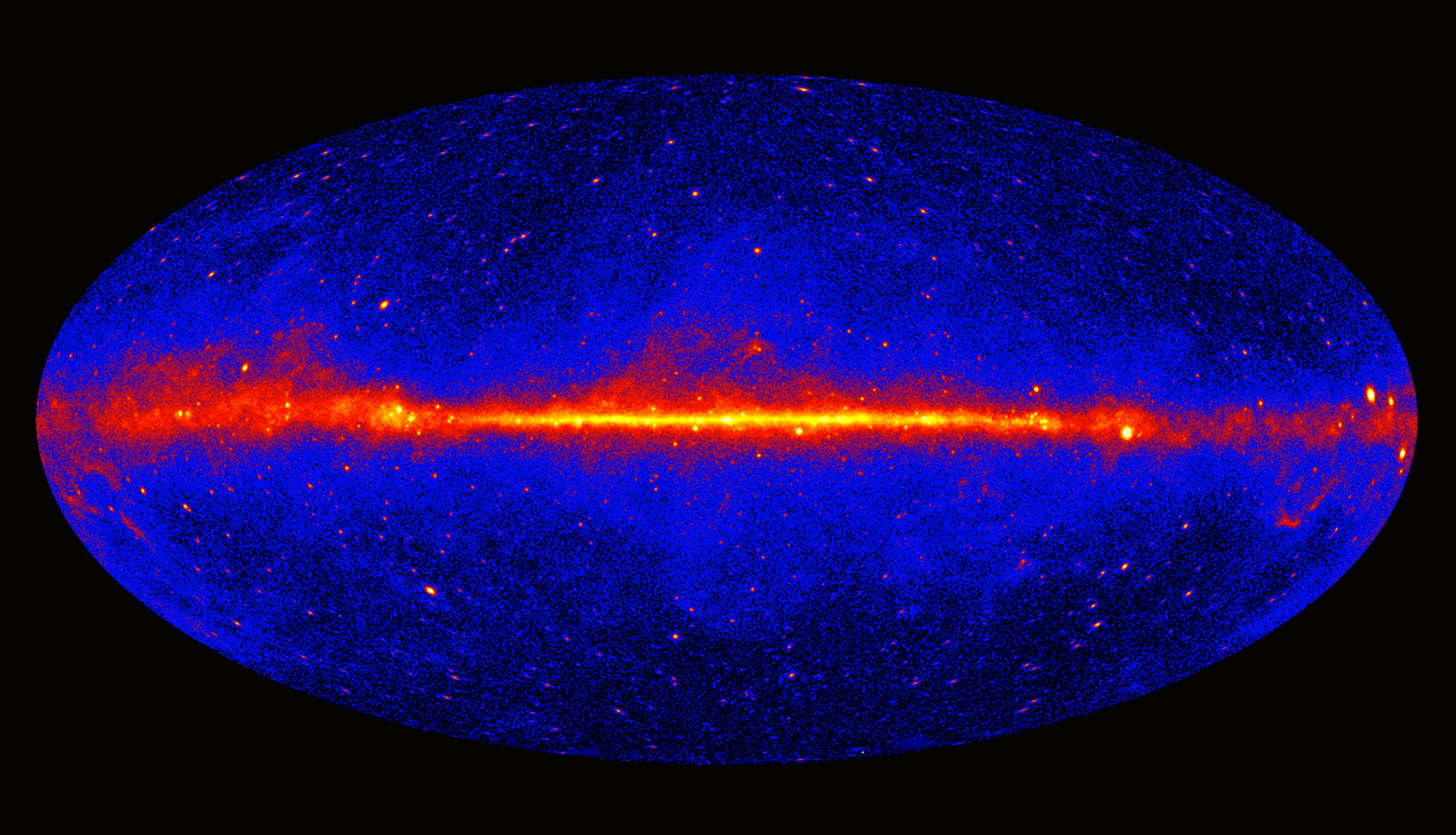
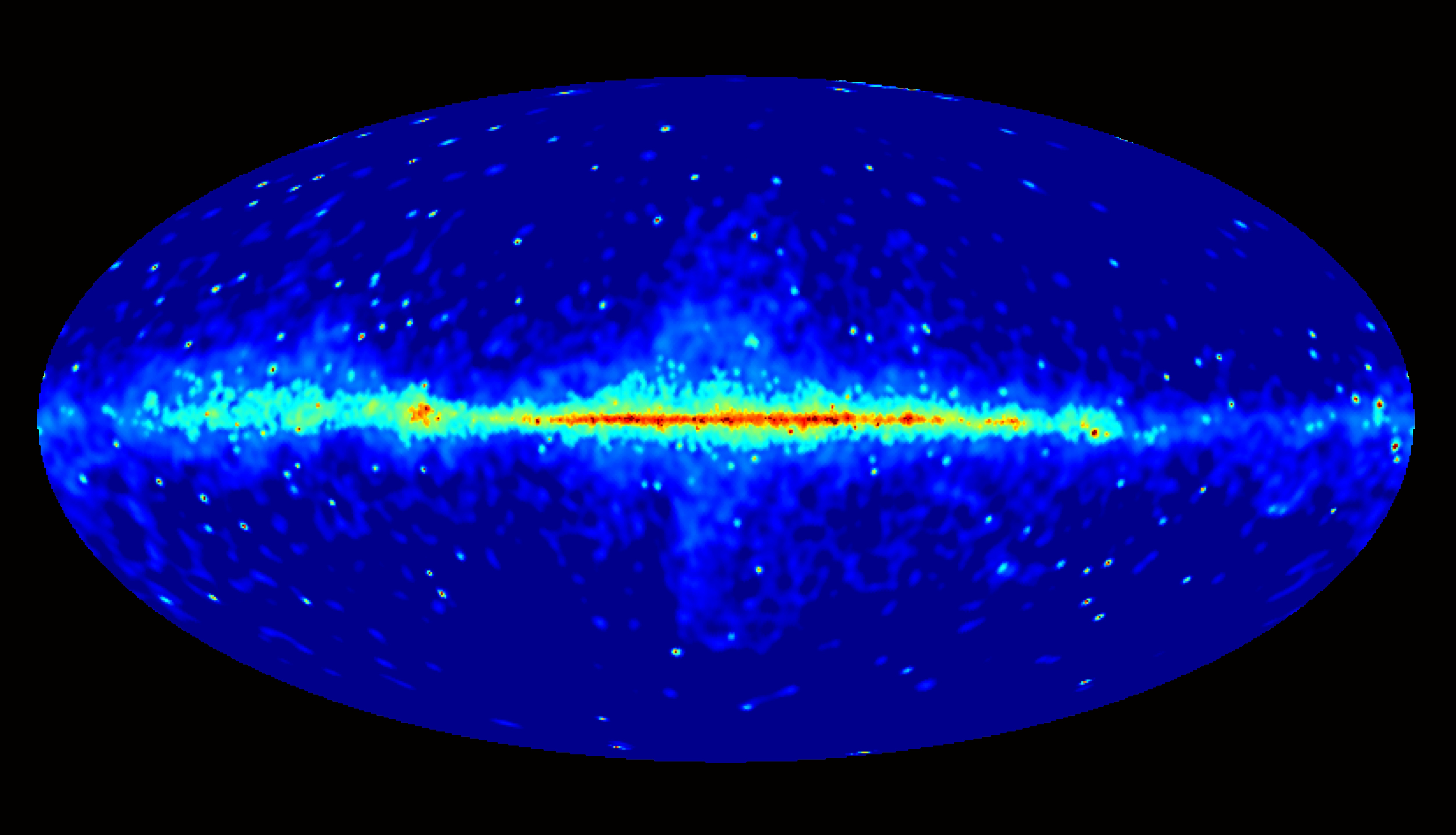

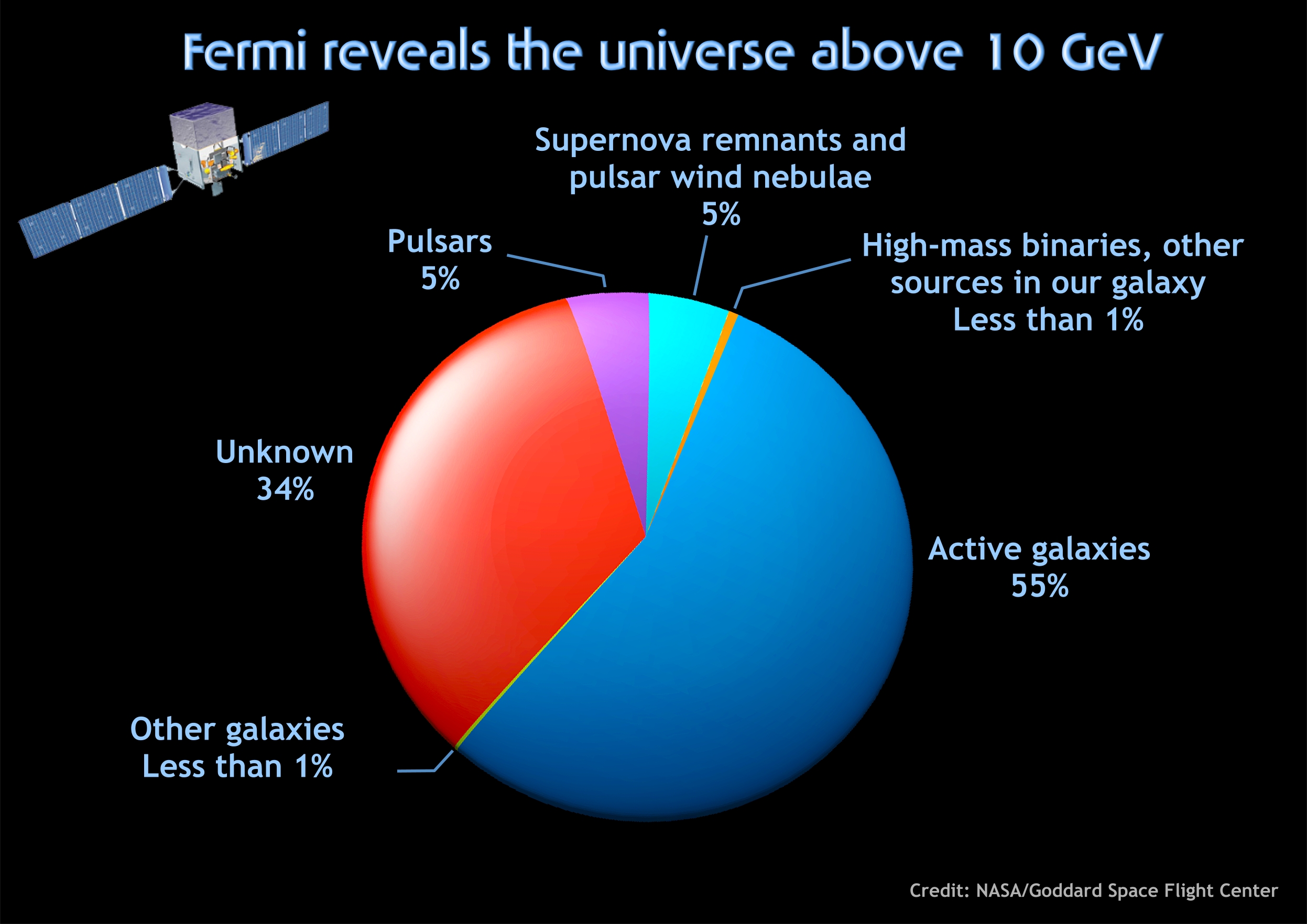
Related
Credits
Francis Reddy (University of Maryland College Park): Lead Science Writer
Francis Reddy (University of Maryland College Park): Graphics
NASA/Goddard Space Flight Center. However, individual images should be credited as indicated above.
https://svs.gsfc.nasa.gov/10887
Mission:
Fermi Gamma-ray Space Telescope
Data Used:
Fermi/LAT
Event ListThis item is part of this series:
Astrophysics Stills
Goddard TV Tape:
G2012-005 -- Fermi and RXTE AAS releases
Keywords:
SVS >> Galaxy
SVS >> Satellite
GCMD >> Earth Science >> Spectral/Engineering >> Gamma Ray
SVS >> Black Hole
SVS >> Gamma Ray Burst
SVS >> Astrophysics
SVS >> Pulsar
SVS >> Space
SVS >> Fermi
SVS >> Blazar
SVS >> Supernova
SVS >> Star
SVS >> Space Science
NASA Science >> Universe
GCMD keywords can be found on the Internet with the following citation: Olsen, L.M., G. Major, K. Shein, J. Scialdone, S. Ritz, T. Stevens, M. Morahan, A. Aleman, R. Vogel, S. Leicester, H. Weir, M. Meaux, S. Grebas, C.Solomon, M. Holland, T. Northcutt, R. A. Restrepo, R. Bilodeau, 2013. NASA/Global Change Master Directory (GCMD) Earth Science Keywords. Version 8.0.0.0.0
